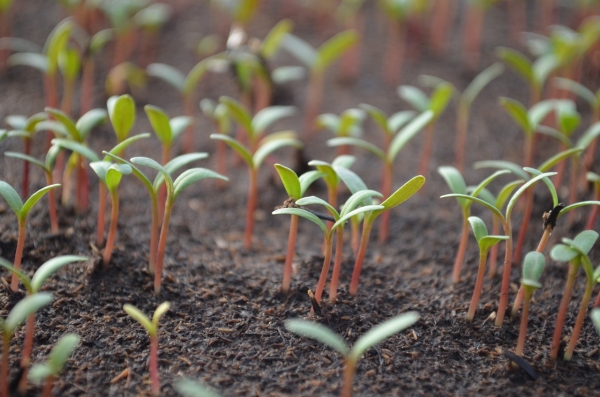Plant roots have their own thermometer to measure the temperature of the soil around them and they adjust their growth accordingly. Through extensive experiments, a team led by Martin Luther University Halle-Wittenberg (MLU), was able to demonstrate that roots have their own temperature sensing and response system. In a new study in "The EMBO journal", the scientists also provide a new explanation for how roots themselves detect and react to higher temperatures. The results could help develop new approaches for plant breeding.
The researchers used climate chambers to investigate how the plant model organism thale cress and the two crops cabbage and tomatoes react to rising ambient temperatures. They increased the ambient temperature from 20 to 28°C (68 to 82.4 degrees Fahrenheit). "Until now, it was assumed that the plant shoot controlled the process for the entire plant and acted as a long-distance transmitter that signalled to the root that it should alter its growth," says Professor Marcel Quint from the Institute of Agricultural and Nutritional Sciences at MLU. His team has now been able to disprove this through extensive experiments in cooperation with researchers from the Leibniz Institute of Plant Biochemistry (IPB), ETH Zurich and the Max Planck Institute for Plant Breeding Research in Cologne. In one experiment, scientists cut off the shoot of the plants but allowed the roots to continue to grow. "We found that the roots were not affected by this and grew at elevated temperatures in the same way as on plants with intact shoots. The higher temperature stimulated cell division and the roots became significantly longer," says Quint. The team also used mutant plants whose shoots could no longer detect and respond to higher temperatures. Those were grafted onto roots without this defect. Here, too, the roots were able to react to the heat in the soil, even though the shoot did nothing.
The researchers found in all of their experiments that root cells increased the production of the growth hormone auxin, which was then transported to the root tips. There, it stimulated cell division and enabled the roots to reach further down into the soil. "As heat and drought usually occur in tandem, it makes sense for the plants to tap into deeper and cooler soil layers that contain water," Quint explains.
Read more at: Martin-Luther-Universität Halle-Wittenberg
Photo Credit: u_79qqozws via Pixabay


